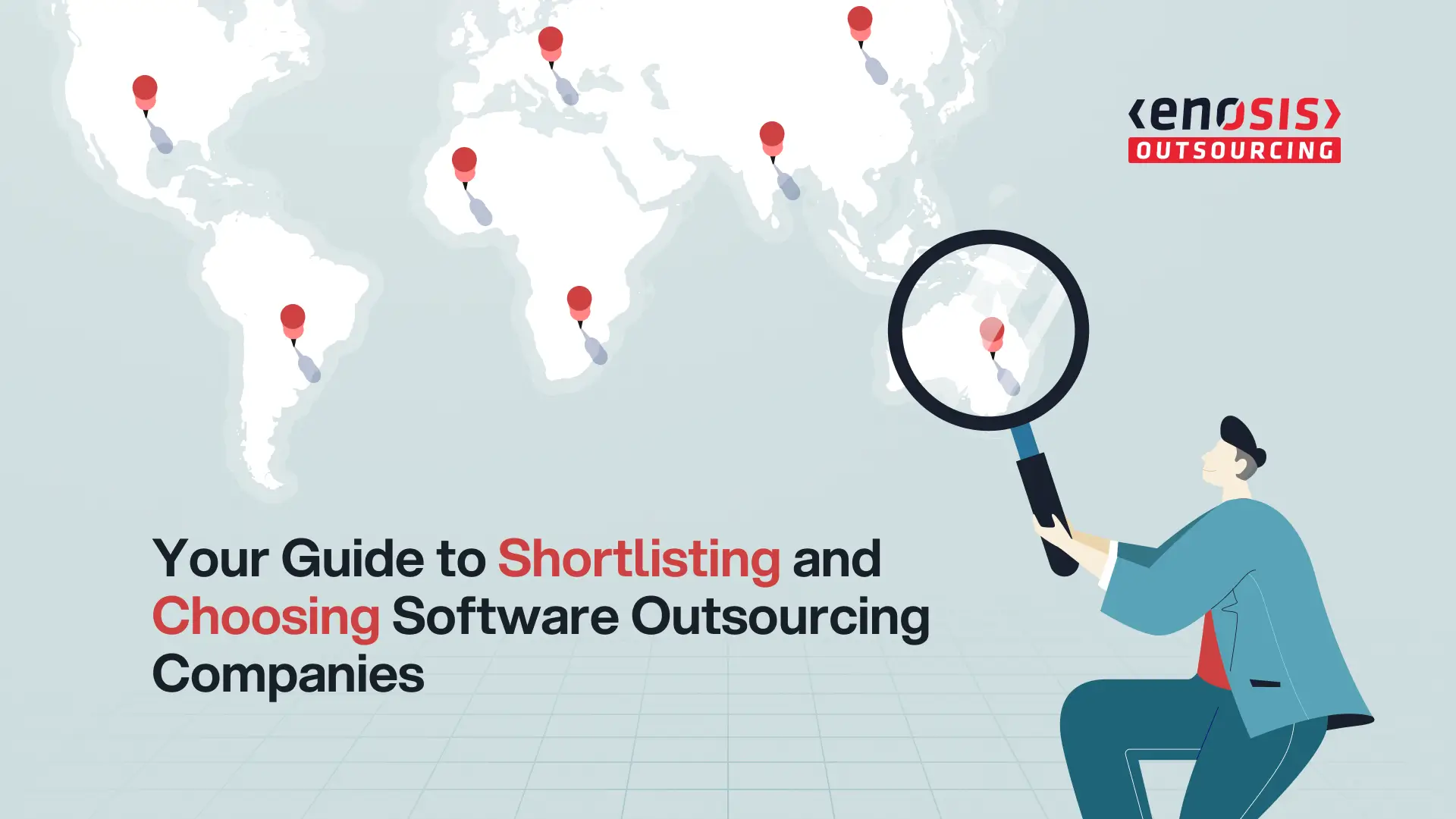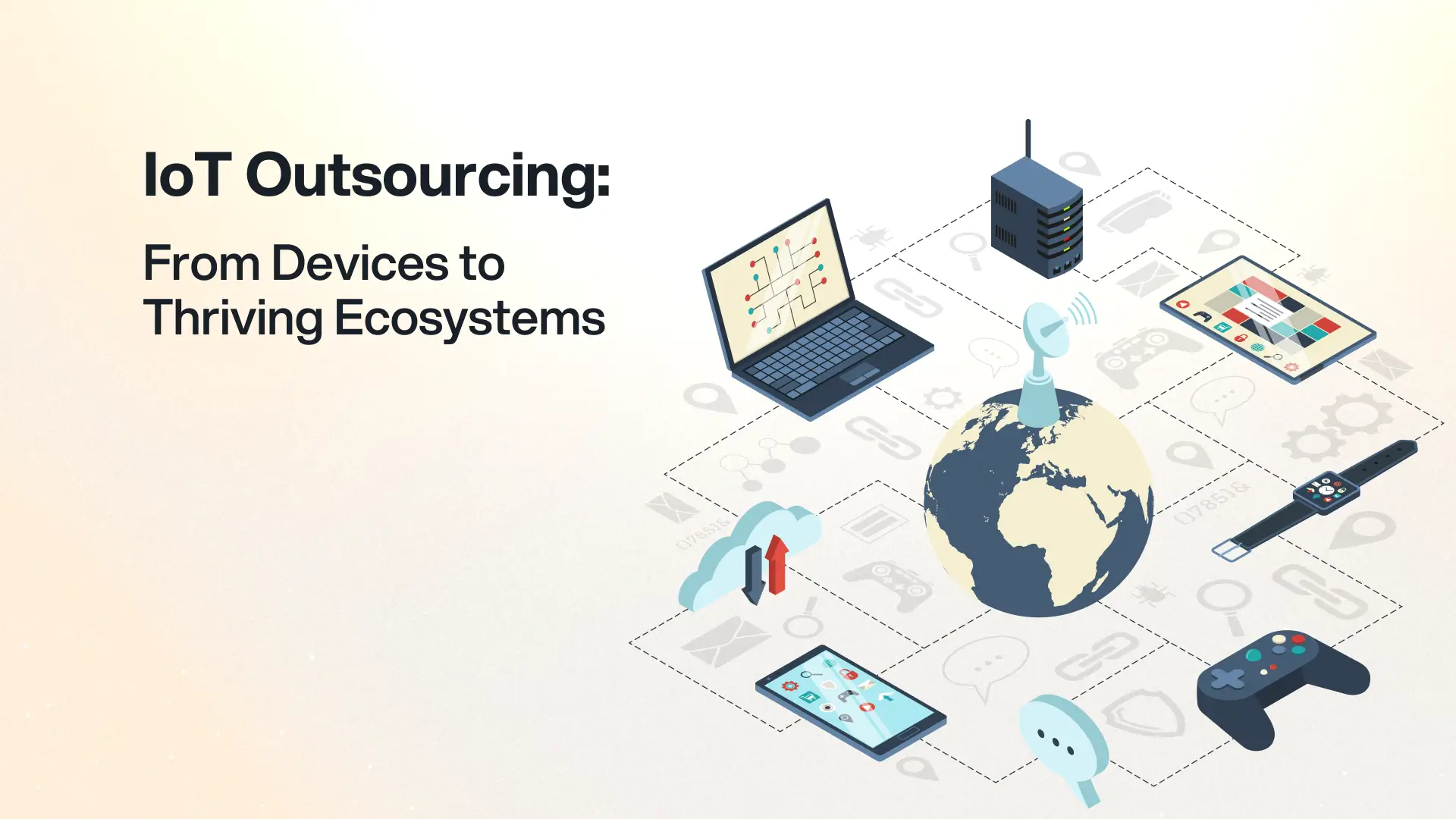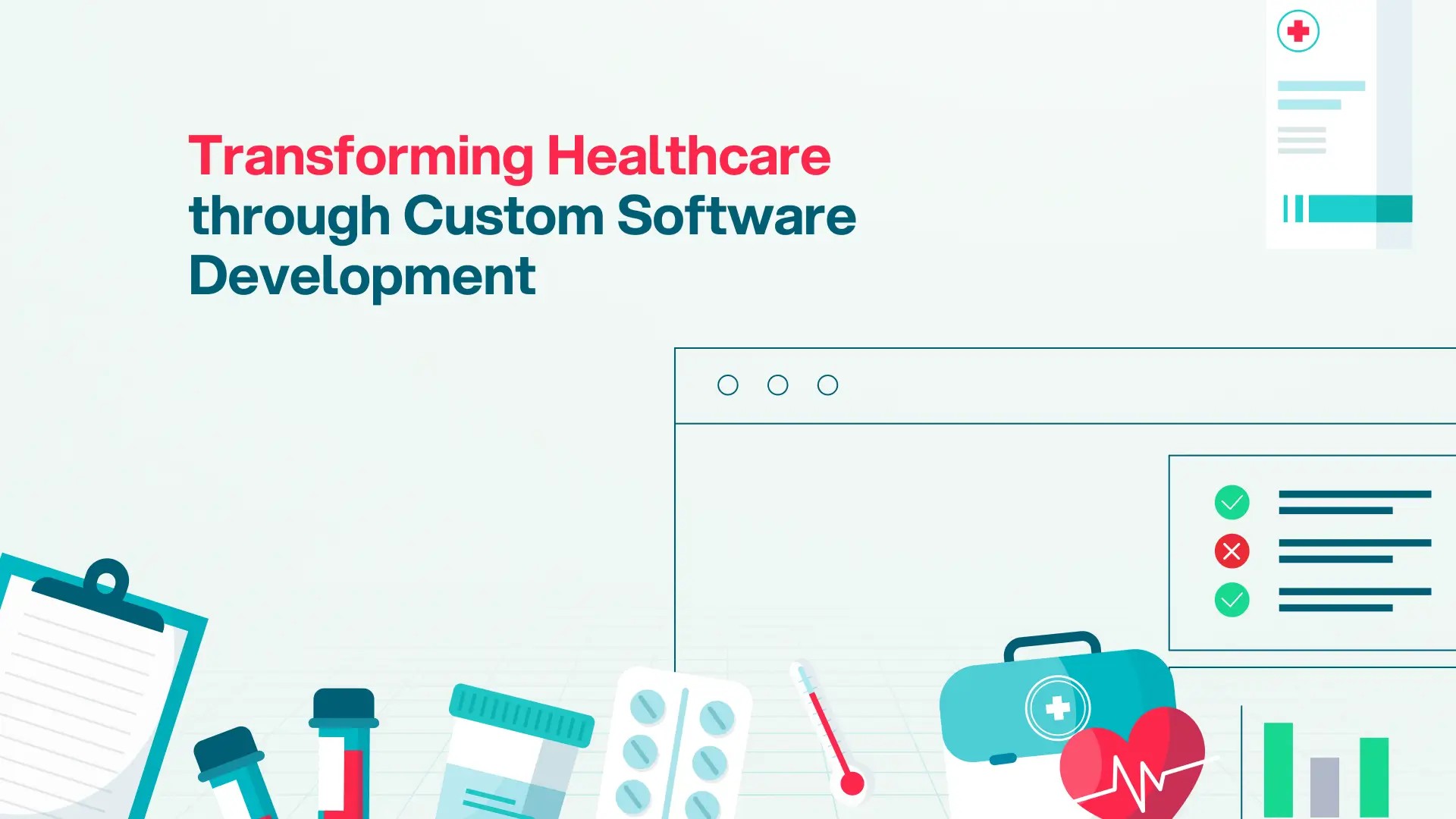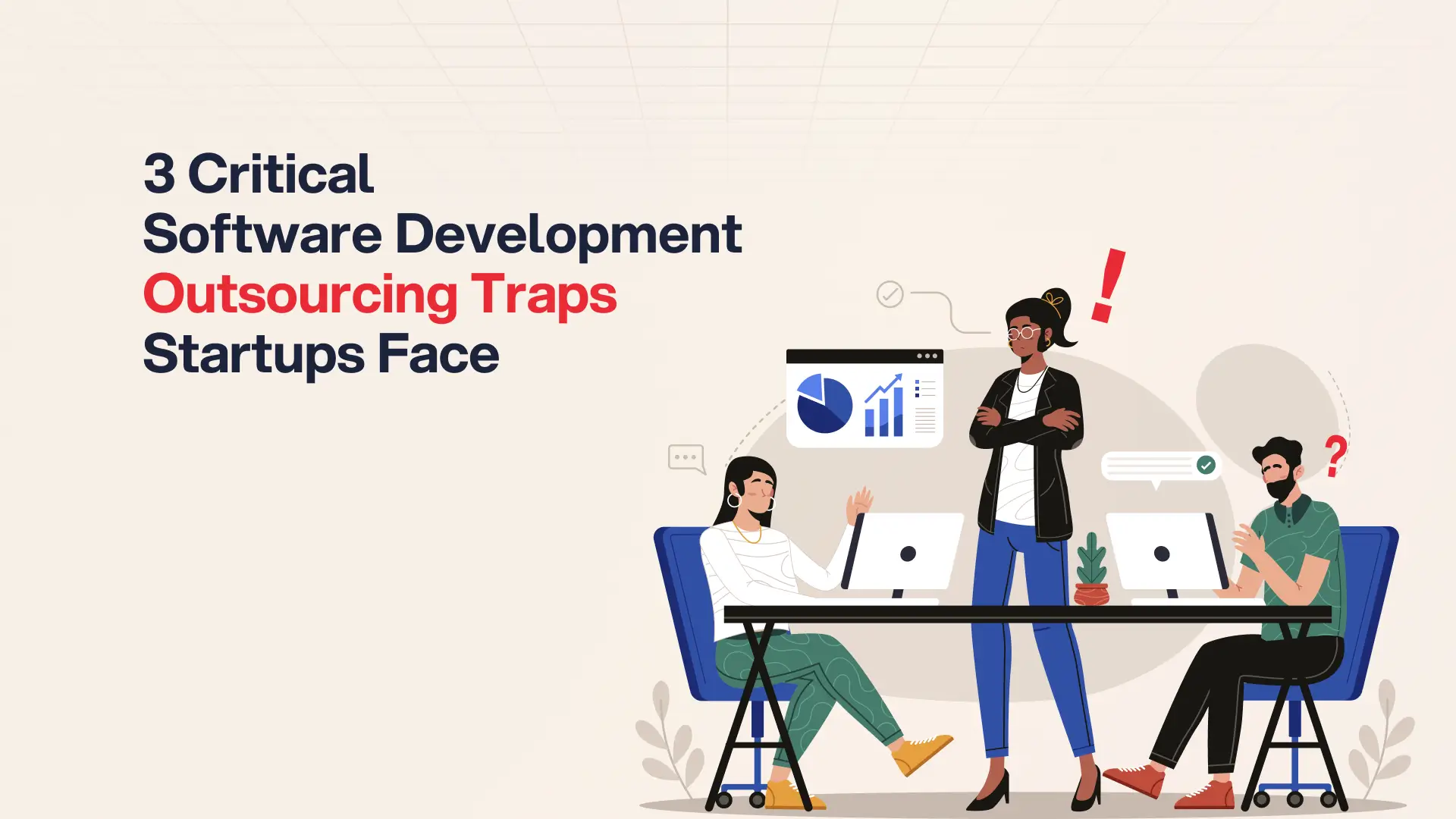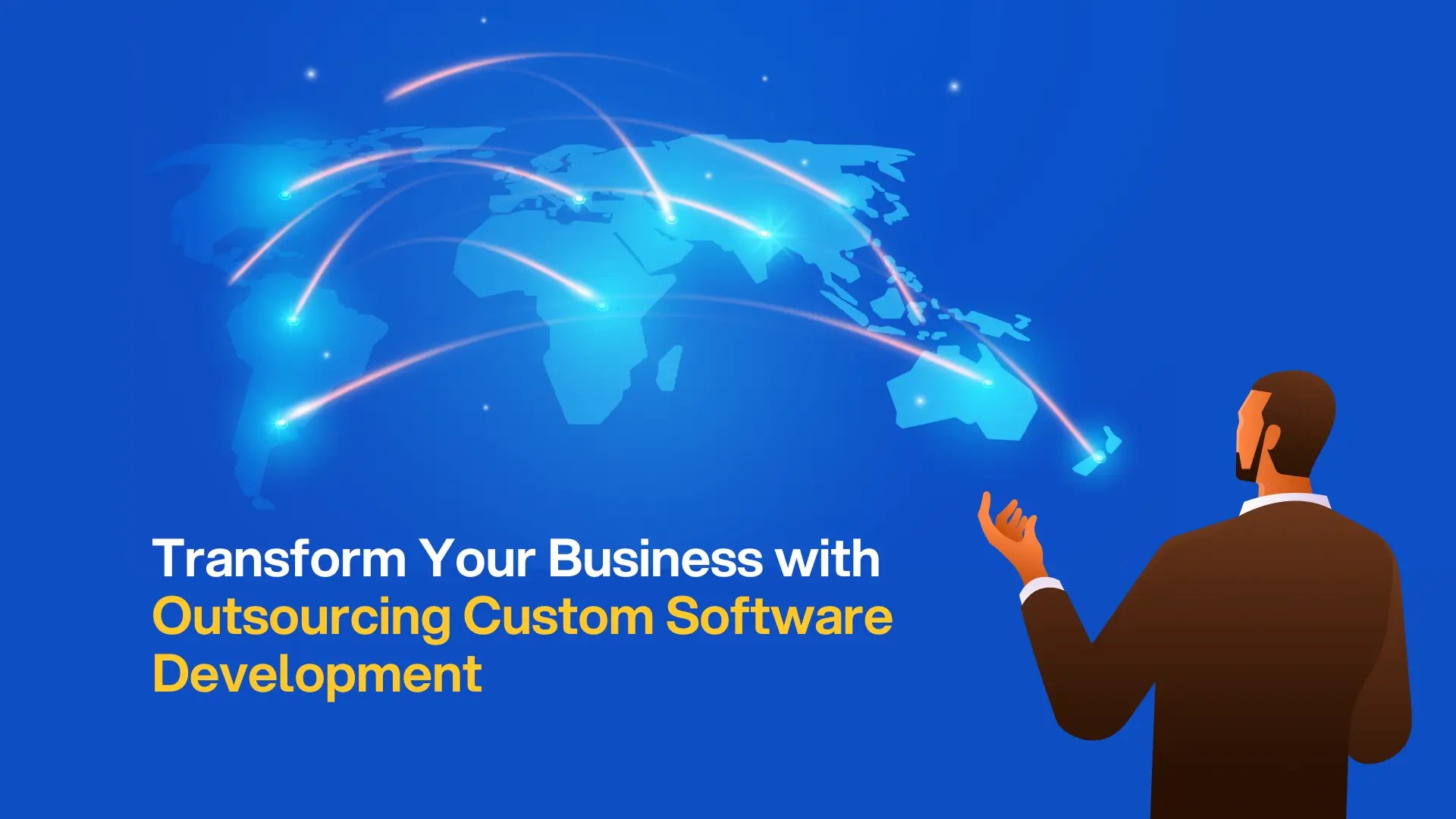Post Activity
 1358
1358
Table of Content
Share This Post
Table of Content
Custom software outsourcing is the practice of partnering with external specialists to design, build, and maintain applications tailored to an organization’s exact requirements. These solutions are engineered to align with specific workflows, integrate with existing systems, and support long-term strategic goals.
By outsourcing custom development, businesses gain access to niche expertise and scalable capacity without the burden of building large in-house teams. The result is software that not only addresses immediate challenges but also creates a competitive edge through differentiation, operational efficiency, and adaptability as the business grows.
Whether you’re just starting or scaling up, this guide highlights eight essential areas to help you make confident and informed decisions about outsourcing your custom software development.
1. What is Outsourcing Custom Software Development?
At its core, outsourcing custom software development means hiring an external team, agency, or vendor to design, build, and maintain software solutions tailored specifically to your business needs. Unlike off-the-shelf applications, custom software is built from the ground up to solve unique challenges, support specific workflows, and provide a competitive edge.
When outsourcing, businesses don’t rely solely on their in-house developers. Instead, they partner with external experts who bring specialized skills, tools, and experience to the table. This model allows companies to scale faster, reduce costs, and focus on their core business goals while the outsourced partner manages the technical side.
Key Characteristics of Outsourcing Custom Software Development:
- Tailored Solutions: Custom software is built around an organization’s unique challenges and workflows, ensuring smooth adoption. By focusing only on the features teams actually need, it reduces learning curves, eliminates unnecessary complexity, and integrates seamlessly with existing systems.
- Third-Party Involvement: Development is handled by external partners – offshore, nearshore, or onshore – who bring specialized expertise and industry knowledge.
- End-to-End Development: Outsourcing can cover the entire software lifecycle, from ideation, UI/UX design, and coding to testing, deployment, and ongoing maintenance.
- Seamless Integration: Custom outsourced solutions are designed to fit directly into existing workflows and legacy systems, minimizing disruption and enabling faster adoption across the organization.
- Scalability: Custom solutions grow with the business. They can be continuously updated to handle new users, larger data volumes, or advanced technologies like AI and Big Data—offering long-term efficiency and adaptability.
Thinking of Outsourcing?
Access a wide range of outsourcing companies and find your best fit.
How It Differs from In-House Development
- In-House Development: Companies build software using their own developers and resources. This provides full control but requires high investment in talent, infrastructure, and ongoing training.
- Outsourcing Development: External teams handle the work. Companies gain flexibility, faster turnaround times, and cost savings but must manage communication and alignment with the vendor.
2. Why Businesses are Outsourcing More in 2025
Outsourcing in 2025 has shifted from being a cost-cutting measure to a growth strategy. Companies are leveraging external partners to access global talent, accelerate time-to-market, and stay agile in a competitive digital landscape. By converting fixed costs into flexible investments, outsourcing helps businesses scale operations while keeping their focus on core priorities.
The results speak for themselves. GitHub outsourced a critical feature in its early days, a move that helped drive its $7.5 billion acquisition by Microsoft. Skype partnered with a small Estonian team to launch ahead of competitors. Wise expanded engineering capacity across Eastern Europe to overcome local hiring constraints, fueling a valuation beyond $10 billion. Even Google has relied heavily on contractors, who outnumbered full-time employees in 2018, to support products like Search and Ads, proving how outsourcing sustains innovation at scale.
For deeper insights into outsourcing drivers such as compliance, risk management, and scalability, see our strategic guide to modern software development outsourcing.
Ready to Build Your Team?
Let’s create together, innovate together, and achieve excellence together. Your vision, our team – the perfect match awaits.
3. Benefits of Outsourcing Custom Software Development
Outsourcing has moved far beyond cost reduction. It is now a strategic lever that enables innovation, scalability, and long-term competitiveness in a fast-changing digital economy. By unlocking global talent, accelerating delivery, improving financial flexibility, and strengthening compliance, outsourcing has become a cornerstone of business resilience and growth. For an in-depth look at benefits such as risk management, scalability, and compliance, explore our article on the benefits of software outsourcing.
The real advantage emerges when outsourcing is applied to custom software development. Unlike off-the-shelf tools, custom solutions are designed around unique workflows and tailored to integrate with existing systems—creating competitive differentiation that is difficult to replicate. Organizations that adopt custom builds consistently report stronger alignment between technology and business goals, along with higher user adoption thanks to smoother workflows and personalization. By outsourcing these solutions, companies combine external technical expertise with industry-specific insights, enabling measurable impact and defensible long-term advantages.
4. Outsourcing Models for Custom Software Development
When businesses decide to outsource, one of the first decisions they face is choosing the right outsourcing model. Each model has its strengths and challenges, and the best option depends on your budget, goals, and communication needs.
a. Offshore Outsourcing
This involves hiring a software development team located in a distant country, often with a significant time zone difference.
- Pros: Cost savings, access to large talent pools, availability of advanced expertise.
- Cons: Time zone gaps, potential cultural and communication barriers.
b. Nearshore Outsourcing
Here, you work with vendors in neighboring or nearby countries, often within a few hours’ time difference.
- Pros: Easier collaboration, fewer cultural barriers, convenient travel if needed.
- Cons: Costs are usually higher than offshore, though still lower than onshore.
c. Onshore Outsourcing
This means outsourcing to a company within your own country.
- Pros: No language or cultural barriers, same legal system, smoother collaboration.
- Cons: Typically the most expensive option.
d. Hybrid Model
Some businesses adopt a mix of offshore, nearshore, and onshore outsourcing. For example, using a local project manager while development takes place overseas.
- Pros: Balances cost and communication, greater flexibility.
- Cons: Requires strong coordination across different teams.
Start Your Custom Software Project Today!
Partner with trusted outsourcing companies for custom software development and seamlessly elevate your business operations.
5. Cost of Outsourcing in 2025
The cost of outsourcing varies depending on location, engagement model, and project complexity.
Regional Differences:
- Asia (e.g., India, Vietnam, Philippines): $20–$50/hour
- Eastern Europe (e.g., Ukraine, Poland, Romania): $30–$70/hour
- Latin America (e.g., Mexico, Argentina, Brazil): $30–$60/hour
- North America & Western Europe: $80–$150/hour
Pricing Models:
Fixed Price: Best for projects with clear, defined requirements.
Hourly (Time & Materials): Flexible, ideal for evolving projects.
Dedicated Teams: Suitable for long-term, ongoing development needs.
Tip: Always account for hidden costs such as onboarding, communication, and integration when budgeting for outsourcing.
6. Risks and Challenges of Outsourcing
While outsourcing offers many advantages, it also comes with potential challenges:
- Communication Barriers: Time zones and language differences can cause delays if not managed well.
- Data Security: Sharing sensitive data with outsourcing vendors can lead to breaches, IP theft, and regulatory violations like GDPR or HIPAA. Careful partner vetting is essential to reduce these risks.
- Quality Assurance: Outsourcing doesn’t guarantee quality unless you set clear expectations.
- Vendor Reliability: Not all outsourcing companies deliver what they promise, due diligence is essential.
7. How to Choose the Right Outsourcing Partner
Choosing the right outsourcing partner is one of the most important decisions in your software strategy. The right partner doesn’t just write code; they become an extension of your team, ensuring quality, security, and long-term business alignment.
Key factors to consider include:
- Technical Expertise: Does the vendor have proven experience in your required technologies?
- Industry Knowledge: Have they worked with businesses in your sector before?
- Communication Practices: Do they provide clear updates, reports, and access to project management tools?
- Security and Compliance: Do they follow strict data protection standards?
- Reputation: Look for client testimonials, reviews, and case studies.
Beyond these essentials, two areas often determine whether outsourcing partnerships succeed or struggle over time:
- Software Maintenance and Support: A reliable partner provides ongoing support well beyond the initial launch. Continuous monitoring, timely updates, and proactive troubleshooting keep systems secure, scalable, and stable as business needs evolve, making software maintenance and support a critical part of long-term outsourcing success.
- Quality Assurance Practices: Strong QA processes reduce the risk of costly delays and ensure consistent performance. The most effective partners integrate quality assurance best practices into every stage of development, combining automation with manual testing to maintain high reliability and user confidence.
8. Key Trends Shaping the Future of Outsourcing Custom Development
The future of outsourcing custom software development is not a simple linear projection but a dynamic evolution shaped by emerging technologies, shifting business priorities, and new models of collaboration. It is moving away from being a transactional, cost-driven activity to a strategic, value-based partnership. Looking ahead, several trends will shape the outsourcing landscape in 2025 and beyond:
1. The AI-Powered Transformation of Development
Artificial intelligence is the most significant driver of change. It is not replacing developers but is becoming a core tool that reshapes the entire development lifecycle.
- AI-Assisted Development: AI-powered tools like GitHub Co-pilot are becoming standard, automating repetitive tasks such as code generation, refactoring, and bug detection. This frees up human developers to focus on higher-value, more creative problem-solving.
- Predictive Project Management: AI and machine learning are being used to analyze data and predict project timelines, potential risks, and resource needs with greater accuracy. This leads to more efficient and predictable project delivery.
- Enhanced Quality Assurance: AI automates large parts of the testing and quality assurance (QA) process, leading to faster testing cycles, fewer defects, and a more reliable final product.
2. Shift from Offshoring to Nearshoring and Hybrid Models
While offshoring for cost savings remains, businesses are increasingly valuing proximity, cultural alignment, and real-time collaboration.
- Nearshoring: Outsourcing to nearby countries with similar time zones and cultural backgrounds is gaining significant momentum. This model simplifies communication, allows for more synchronous collaboration, and improves project management.
- Hybrid Models: The future will be defined by flexible, hybrid engagement models. This could involve a mix of in-house senior architects, a nearshore team for core development, and offshore specialists for specific tasks like QA or data analysis. This “right-shoring” approach allows companies to optimize for both cost and quality.
3. A Focus on Specialized Skills over Generalists
The demand for niche expertise in emerging technologies is skyrocketing. Companies will seek partners who can provide a deep bench of specialists, rather than generalist developers.
High-Demand Expertise: Outsourcing will be the primary way for businesses to access talent in rapidly evolving fields such as:
- Generative AI and Machine Learning: For building AI-powered applications and integrating machine learning models.
- Cloud-Native Development: For building scalable, resilient applications on platforms like AWS, Azure, and Google Cloud.
- Cybersecurity and DevSecOps: As cyber threats become more sophisticated, companies will increasingly outsource security-focused development to experts who can embed security into every stage of the software lifecycle.
4. The Rise of Strategic Partnerships
Outsourcing is evolving from a transactional vendor-client relationship to a long-term strategic partnership.
- Shared Responsibility: Clients expect their outsourcing partners to act as strategic allies, providing not just coding services but also proactive insights, technology recommendations, and innovation roadmaps.
- Value-Based Pricing: As automation and AI increase efficiency, the focus is shifting from a per-hour or per-developer pricing model to value-based pricing, where the outsourcing partner’s compensation is tied to the business outcomes they deliver (e.g., faster time-to-market, higher user engagement).
5. Low-Code/No-Code Development
While it might seem counterintuitive, the rise of low-code and no-code platforms will fuel the demand for outsourced expertise. These platforms make it easier for businesses to build simple applications, but still require skilled developers for complex integrations, security, and the development of custom features that go beyond the platform’s capabilities. Outsourcing providers will specialize in helping clients leverage these platforms effectively while handling the more intricate technical challenges.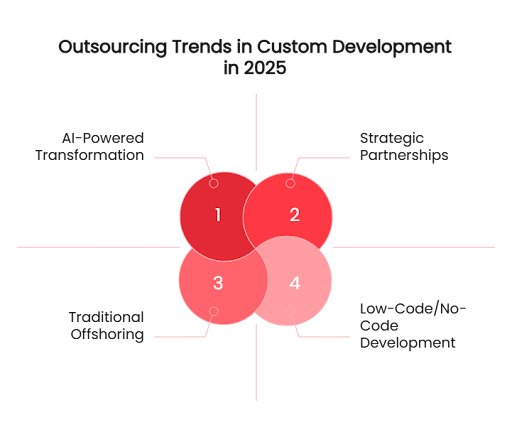
Conclusion
Outsourcing custom software development in 2025 is no longer just about reducing costs, it’s about gaining access to specialized talent, accelerating time-to-market, and scaling with agility. Businesses that adopt outsourcing strategically can innovate faster, stay competitive, and focus on what matters most: growing their core business.
Whether you are a startup looking to build an MVP quickly or a large enterprise planning to expand digital capabilities, outsourcing offers the flexibility and expertise needed to succeed in today’s fast-paced world.
Find Your Perfect Software Outsourcing Partner
Unlock a world of trusted software outsourcing companies and elevate your business operations seamlessly.

